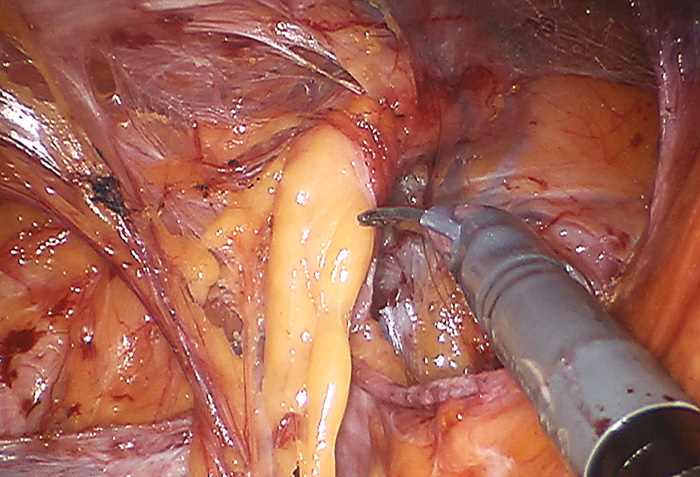Component Separation Technique
Component Separation Technique by Dr. Iraniha
Some of the abdominal wall hernias are so large that the muscles of the abdominal wall become ineffective at doing their job. These patients are unable to generate adequate intra-abdominal pressure which can lead to problems with moving the bowels (defecation), passing urine (micturition) and lifting heavy objects (exertion). Over time, the abdominal organs (viscera) lose their “right of domain” and tend to reside outside of the abdomen within a very large hernia sac.
Further, since the rectus abdominus muscles have no point of attachment to each other in the mid line, they tend to retract toward the sides laterally and over time can shorten and scar down. This condition makes surgical repair very difficult for component separation technique
What is the Component Separation Technique?
The Component Separation Technique is a bilateral rectus abdominis muscle advancement flap. It is used to reconstitute the linea alba, reduce abdominal wall tension, and provide a dynamic abdominal wall in patients with large abdominal wall defects. This component separation technique restores the structural support of the abdominal wall, provides stable soft tissue coverage, and optimizes esthetic appearance of complex abdominal wall defects and giant mid line abdominal wall hernias
This procedure is often necessary in a large abdominal wall hernia where there is not enough original muscular wall to be pulled back together. This surgery separates and advances the abdominal wall muscle layers to lengthen the reach of each side towards the mid line. In this way, defects of up to 20 cm at the waistline can be bridged. In many large abdominal wall hernias, a combination of this technique and mesh repair is used.
Do you have any questions? Are you having abdominal Pain? Contact Dr Iraniha Robotic Hernia Repair Specialist at (949) 646-8444 Thank you.

Need to schedule a consultation with Dr. Iraniha?
Click on the Contact Us button to start the consultation schedule. Thank you!
